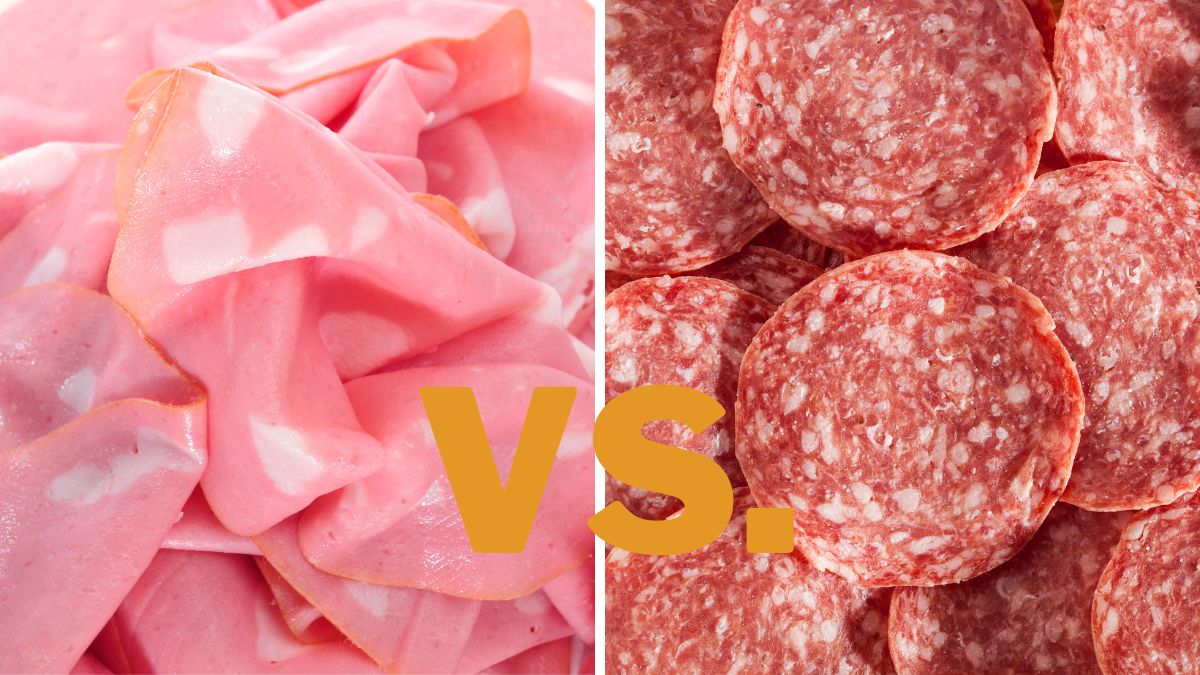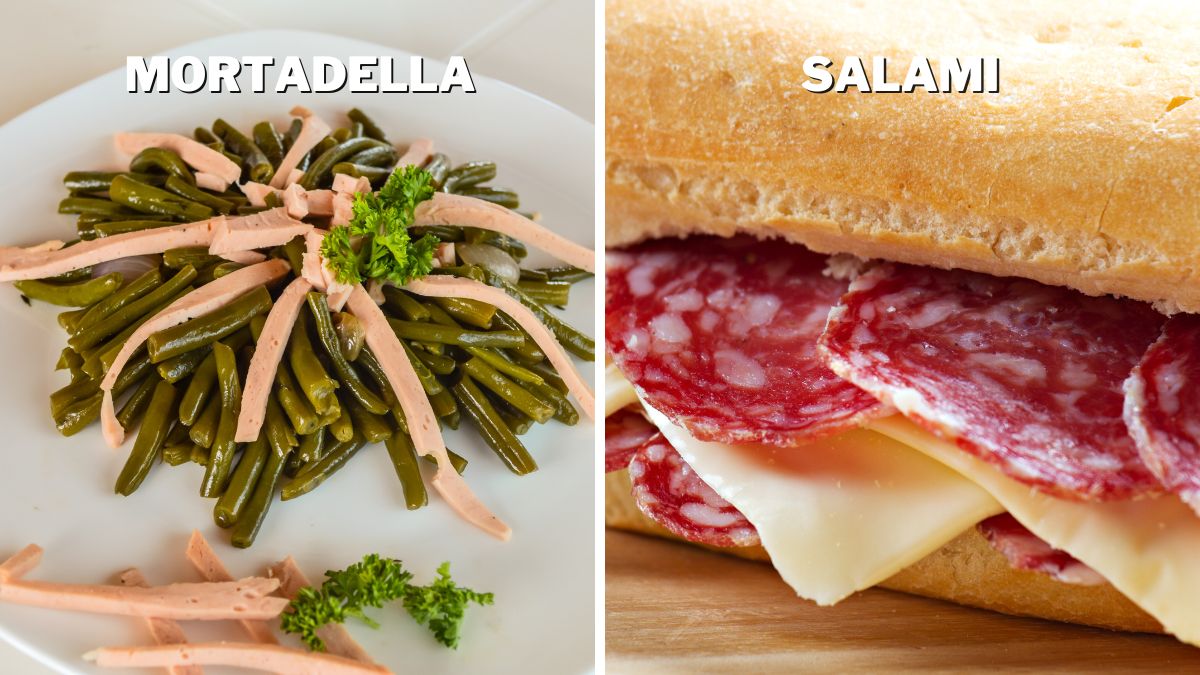Mortadella vs. Salami: Differences & Which Is Better?

Mortadella and salami have been around for centuries, but what do you actually know about them besides their obvious differences? With their cured meats, fresh herbs, and spices, they may not be as different as you think. I have used one instead of the other in some cases, but such occasions are quite rare. Still, if you’re curious about what makes the two different and which one is more delicious, you’ve come to the right place. So, what are the differences between mortadella and salami?
While mortadella is made from ground pork, salami contains both pork and beef. Mortadella has a milder flavor. When it comes to preparation, it is seasoned with fat cubes and ingredients like pistachios and myrtle berries, while salami uses common salt, pepper, and garlic seasonings and is then dry-cured.
The following article will lay out all the differences between mortadella and salami so that you can make an informed decision when deciding which one to buy. And finally, it will help you decide which of the two is ultimately better. So, let’s get started!
Differences in Ingredients
Mortadella is an Italian boiled sausage made from finely ground pork to which small pieces of fat are added. It’s seasoned with salt, pepper, pistachios, myrtle berries, and nutmeg and often contains other spices.
Salami, however, is an Italian sausage that is smoked to prevent spoilage. It’s made from coarsely chopped pork and beef mixed with garlic and other spices such as salt and peppercorns. Fat is also essential to salami; white streaks of fat in the meat run through the final product, which helps keep the flavor inside during aging.
One of the main differences between mortadella and salami is in the ingredients: Mortadella uses ground pork, while salami uses a coarser mixture of pork and beef. In addition, salt and pepper are common to both types of sausage, but mortadella also uses pistachios and myrtle berries for flavor variations, and salami adds garlic and peppercorns for its unique flavor profile.
Differences in Taste

Concerning taste, the two offer very different experiences. With mortadella, you’ll find a mild flavor that just hints at pepper, and you’ll also notice some slight sweetness in this bologna-style sausage. Salami is more robust in comparison, with a complete flavor profile that has hints of garlic, smoke, and paprika. This contrast is the main reason why they often find themselves shoulder-to-shoulder served on a platter!
Those who appreciate the complex flavors of salami will find something special in the combination of spices and curing techniques used to create it. But if you’re looking for something more subtle, mortadella might be right up your alley, as it’s known for its softer taste.
The truth is that each type of sausage suits different preferences — and sometimes even different meals. That’s why I always try to consider the taste when deciding between these two Italian staples!
Differences in Preparation
The process for making mortadella and salami differ significantly. Mortadella is generally made from finely ground pork, which is seasoned with ingredients like paprika, nutmeg, and myrtle berries. It’s seasoned with fat cubes and encased in a special collagen sleeve that helps hold it all together. It is often cooked in a low-temperature oven.
Salami, conversely, is made of a combination of ground meats like pork or beef, pork fat, and seasonings such as salt, pepper, garlic, sugar, and wine. This mixture gets stuffed into a casing, which is left for several weeks in a temperature-controlled environment to dry-cure. During this time, the seasoning mix permeates through the meat to give salami its signature flavor.
Once they are ready, they get sliced into their respective shapes and sizes – salami is typically cut into thin slices, while mortadella gets cut into much thinner slices to be served on sandwiches or pizza.
Uses

Anyone can enjoy mortadella and salami, but they tend to have different uses. Mortadella can be served as an appetizer, sliced thin, and combined with cheese, crackers, or olives. It can also be grilled, roasted, and even served cold as a sandwich filling.
Salami, on the other hand, is usually served cold or at room temperature as a snack or appetizer. It is also frequently used as a pizza topping or in antipasto platters.
If you’re considering using one of them to enhance your recipes, mortadella is excellent for salads and pasta dishes. On the other hand, my favorite salami dishes include pizza, omelets, and sandwiches. Delicious!
Nutrition
When it comes to nutrition, there are both similarities and differences between mortadella and salami. Both types of meat are packed with plenty of protein and a few other nutrients, but how those nutrients are distributed varies.
Mortadella contains higher levels of calcium, iron, and vitamin D than salami. Conversely, salami is higher in potassium, magnesium, phosphorus, sodium, and vitamin B12. Because they have different nutrient content profiles, they make a great pair when included in a balanced diet. [1]
It’s also worth noting that salami has significantly more calories than mortadella per serving, as well as more fat. So if your goal is weight loss or calorie control, incorporating mortadella into your meals might be a more suitable choice. [2]
Which Is Better, Mortadella or Salami?
Well, it all depends on your preferences and what you want in a sandwich. For instance, if you’re on the run for a quick snack and want something flavorful yet low in fat, mortadella is the way to go. However, if you’re looking for something with a more intense flavor and more protein per serving, then salami is the clear winner.
At the end of the day, it boils down to personal preference – so why not try both? Whether it’s a classic Caprese salad with mortadella slices or an Italian-style sandwich with salami — the options are endless!
